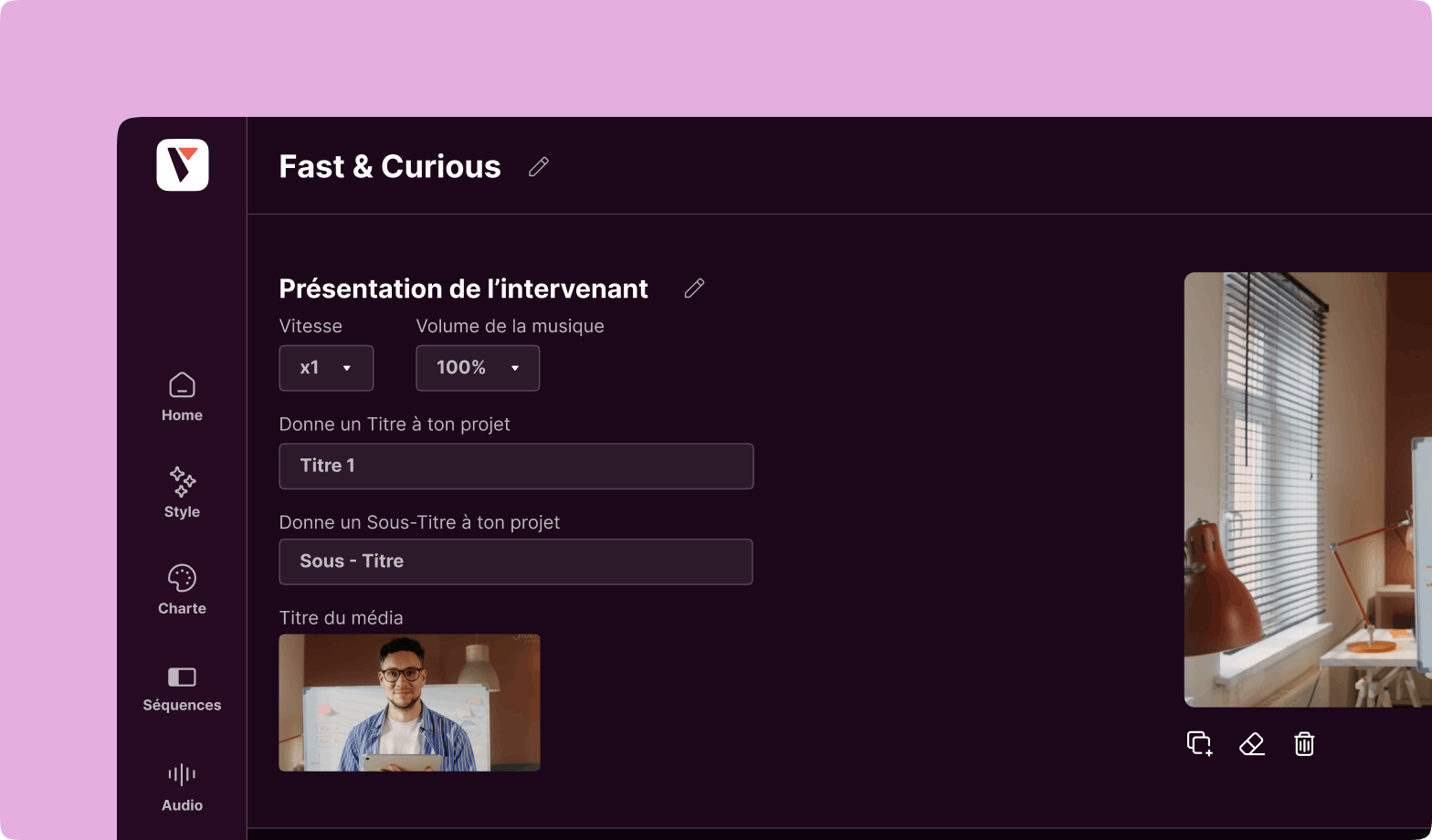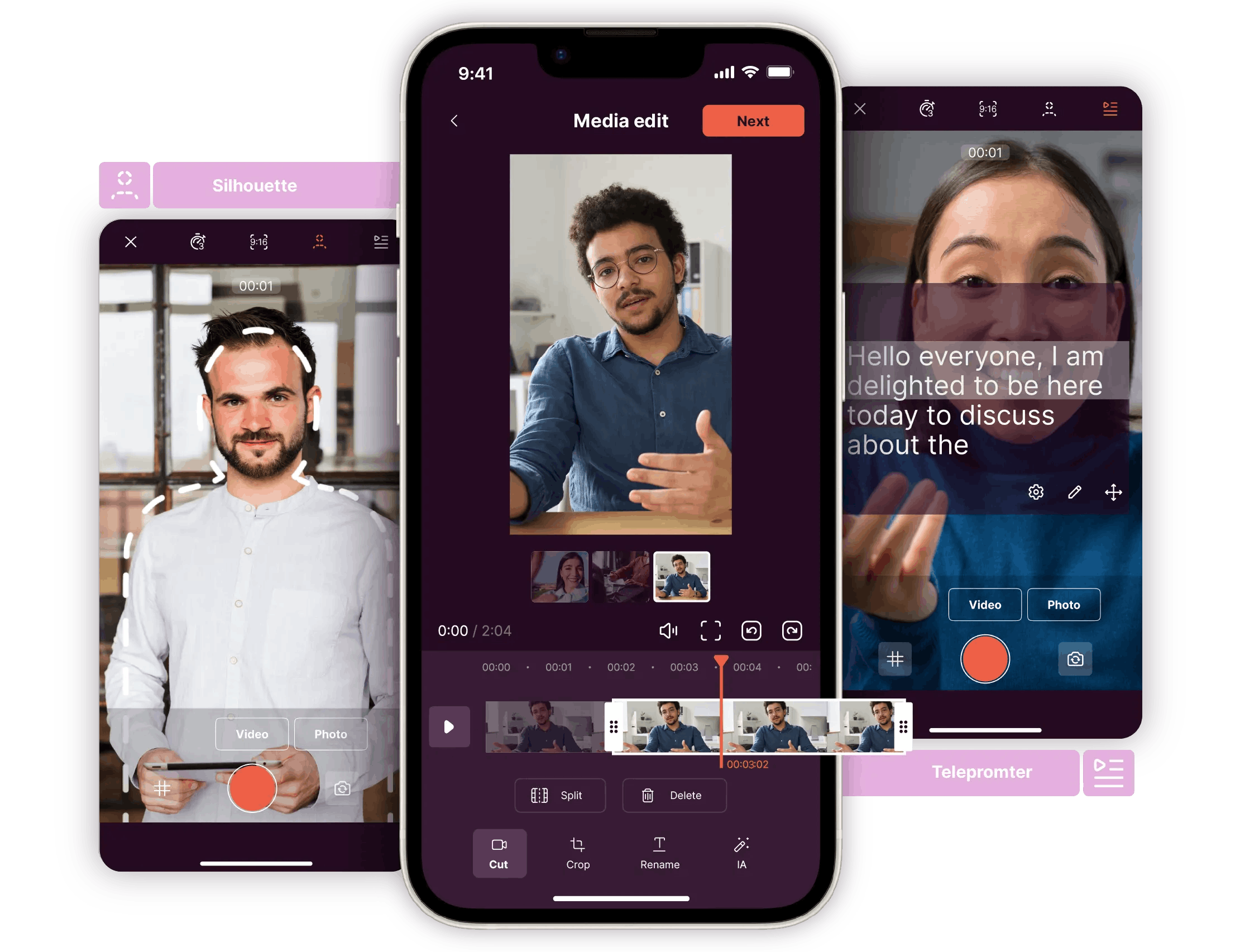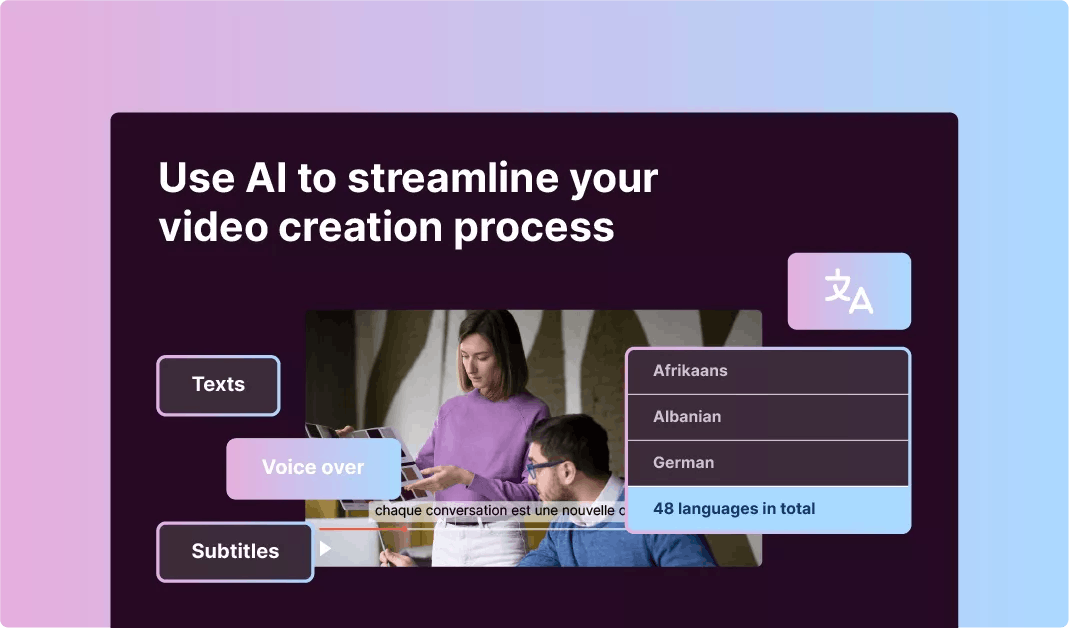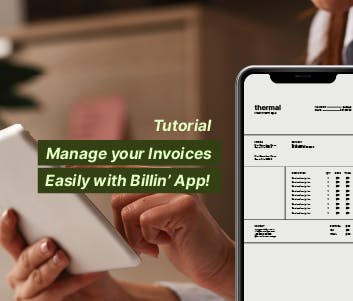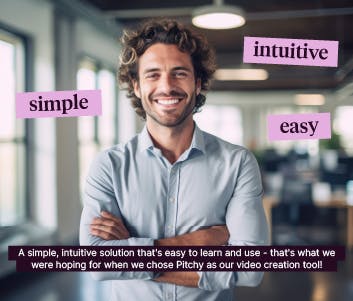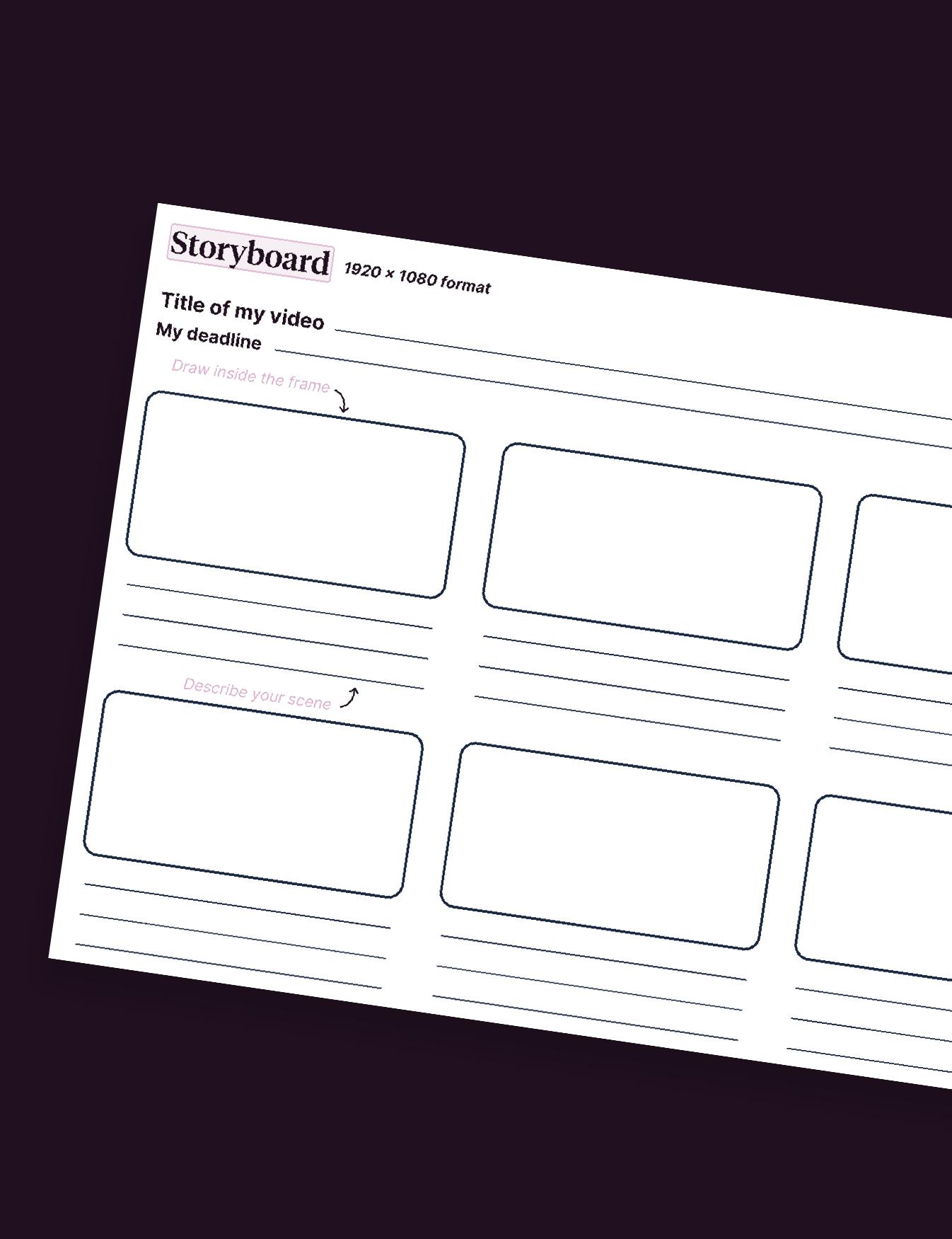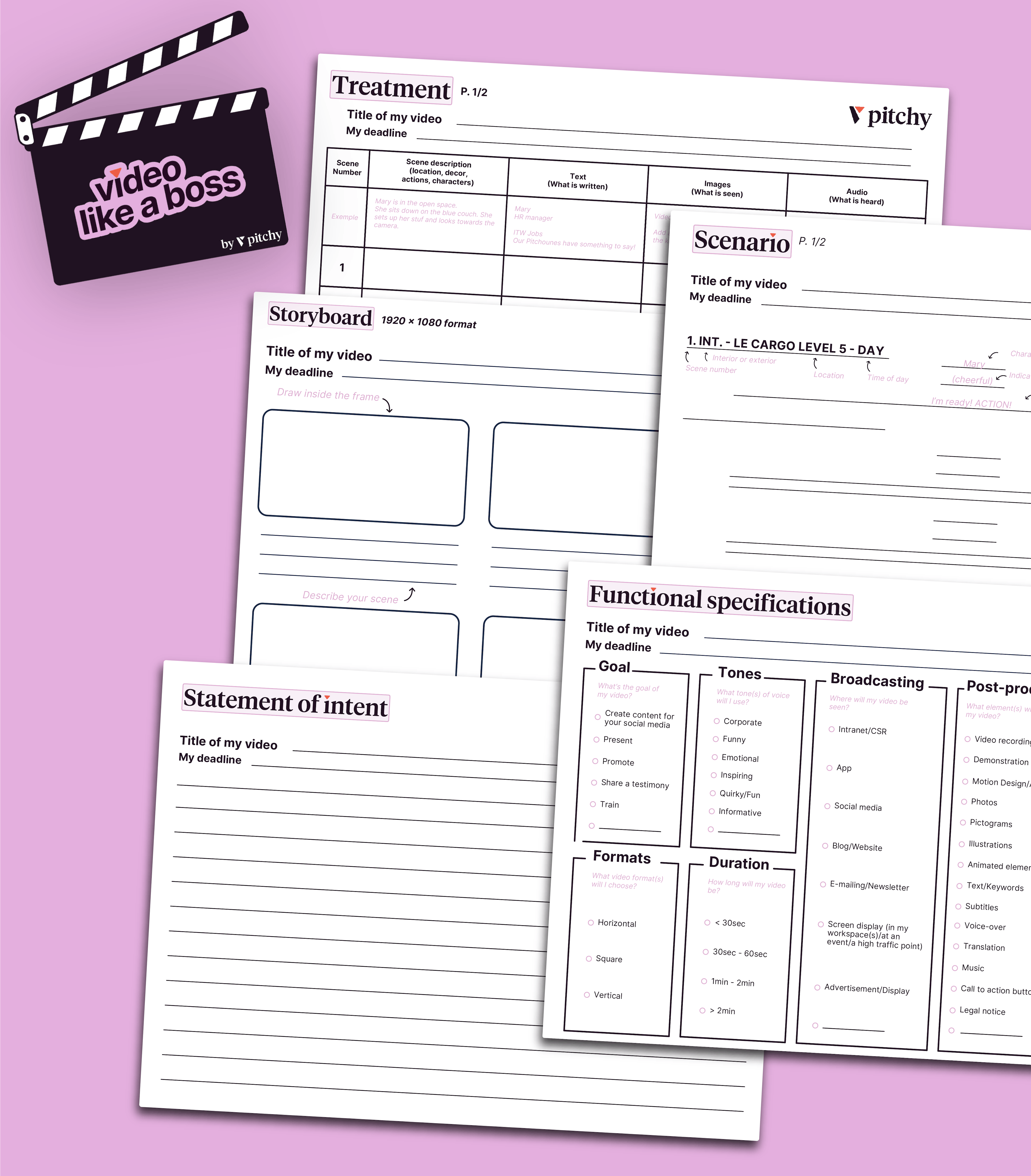5 steps for a successful customer onboarding

Onboarding is the process of welcoming and training. And to do so, you can use corporate video.
“Onboarding”, “Boarding”… Generally speaking, the definition of onboarding is the welcoming of new employees who have just landed a job in many companies (permanent, fixed-term, trainees, assistants). Creating HR video productions for the web to introduce them to everyone and get the adventure off to a good start may be the opportunity you are looking for, as the road with you may be long.
But, this animation process for new hires does not only apply internally: you can also decide on an onboarding “tradition” with your new clients, as it is the case with more and more companies, for effective relationship. Employee onboarding video has many advantages:
- You stand out from the competition, because at the moment, only a few companies in France or elsewhere in Europe have this type of practice,
- You project the image of professionals who care about the well-being and understanding of their customers,
- You save time, because once trained, your customers will gain in autonomy, especially if your business is a platform for example,
- And, above all, you will increase your customers’ loyalty, because you bring help, whatever the topic or the issue.
Ready to create? If you want to know why video is the ideal tool for a successful onboarding, read our article on this subject to have an overview!
Here are some tips from Pitchy!
What is an onboarding video? What are its primary goals?
An onboarding video is a video used during the first days of new recruits in the company. It provides the new hires with information about several topics, such as:
- the company’s history,
- its culture and values,
- the type of business operated by the company,
- other information related to the teams and the positions of the new employees.
What are the types of onboarding videos?
You have several types of onboarding videos. To make a great onboarding process, you can combine multiple videos to achieve your goals towards your new hires.
Welcome videos
Welcome videos contain a welcome message from the organization to new recruits. They generally come from the CEO, the new employee’s supervisor, senior team members; or a combination of the three. Welcome videos help alleviate the first-day anxiety of nervous new recruits and make them feel at home in their new company.
The company policies video
These videos educate new employees about the fundamental policies and guidelines that are the foundation of the company. They generally contain the following standard HR material:
- policies on ethics and expected behavior,
- cybersecurity guidelines,
- policies against discrimination/inclusion policies,
- workplace harassment policies.
The knowledge transfer video
These videos are designed to bridge the knowledge between old employees and new hires. They often include:
- recent and ongoing projects,
- responsibilities associated with the new employee’s role,
- the operations supporting the team the new hires are integrating,
- employees’ names, roles, and command structure,
- and insider details such as prospects and connections.
Training videos
Though your new hires are likely to have skills needed to perform their tasks, it doesn’t hurt to acquire new ones when they integrate a new organization. That’s why training videos will enable them to be better at their work. However, the day-to-day skills will take time to develop and cannot be absorbed at once.
Video training allows you to do two main things:
- divide material to new recruits over time, so that they can learn at their pace,
- and host a training library where they can come back whenever they need.
Why you should use onboarding video in your recruitment process
Onboarding videos are key recruitment tools which have several advantages for companies, new employees, new customers, and new users.
Engagement
One of the best features of onboarding videos is that they are engaging. Indeed, studies have consistently shown that 95% of users are more likely to retain information they see on video. On the other hand, only 10% of users retain information found in a text. For this reason, companies must create effective video content that stimulates interactivity with their viewers.
Opportunity of progressive learning for new users for any topic
Onboarding videos enables new employees and new customers to learn about processes, applications and products at their own pace. Therefore, if they haven’t understood something, they can watch the video later. Because of this feature, onboarding videos are the ideal tool to create content that can be adapted to the learning goals of the viewers: interns, employees, or remote workers.
Accessibility to multiple videos, for all types of employee
Another advantage of the onboarding video is that it is accessible on many devices. Indeed, as it is a versatile tool, the information it contains can be stored in cloud storage services (e.g. Google Drive), or on platforms such as a YouTube channel. All you need is an Internet connection to get access to your onboarding video.
Customisation
Onboarding videos can be used to create specific content, according to the training needs of some departments in the company. Thus, they can be privatised and managers don’t have to worry about sensitive information falling into the wrong hands. In this case, the HR departments have to create scripts adapted to the audience they are targeting, as well as the result they want to reach.
Main benefits: a cost-effective and time-saving tool
Employee onboarding videos help companies to save money, as they are more economical than other forms of training or communication tools such as in-house training or a folder full of documents. Indeed, some studies have shown that using videos in companies’ onboarding processes reduced the amount of time needed to train new employees by 90%.
Also, onboarding videos can help to save time in many other ways. For example, new customers can learn to use a new product, service or application through this kind of content. Therefore, they become more autonomous and require less intervention from the customer service department. Thus, the latter can save time to focus on more important and strategic tasks.
#1 Identify your clients’ needs
Before you even begin creating the video, it’s important to understand what your new client wants from you.
For example, at Pitchy, for 8 years, we have offered an online video creation platform, allowing companies to create their own video content without technical skills.
But, before starting, we need to know several things:
- In what context(s) do our new clients need to edit videos? To introduce newcomers? To announce an event? To do internal training?
- How often?
- What type of video? Interviews? Product presentations? Event teaser? Event retrospective?
Here are some other ideas for questions to ask your clients:
- What is the top problem the company is currently facing?
- How has the company tried to solve this problem?
- On a scale of 0 to 10, is the customer satisfied with the solution?
- How does your solution/service contribute to solving this problem and meeting other business needs?
- Do you feel that our solution delivers what was promised to you? Is it a win-win situation?
- On a scale of 0 to 10, would you recommend our solution to a friend or acquaintance?
Depending on the answers, you can provide your expertise, and thus guide the customer the best way possible. To do so, don’t hesitate to draw up a standard questionnaire on Google Forms, for example, to identify the most suitable solution.
#2 Personalise each customer’s onboarding process
There are as many different requests as there are different clients.
As we saw above, Pitchy’s clients don’t come to us for the same reasons. It is therefore important to ensure that we personalise the onboarding of each one of them.
For example, some of our clients, who are already somewhat familiar with video, will want to use this type of content during onboardings. As you can see in the video below, the announcement of the onboarding process is made in 3 distinct stages, with personalisation, the person’s first name.
#3 Make sure that the client is satisfied in no time
If the client feels that he is not getting the expected results quickly enough, it’s very simple: he is likely to go elsewhere. It’s the rule of competition between service providers. Your reactions must therefore be almost instantaneous. You must be operational very quickly, and create a bond of trust and follow-up. Think about these several things:
- With a tutorial video (or a streamlined presentation), quickly explain how to use your platform or service. To motivate your customers and make them winners, have a different approach, and reward them or congratulate them at each step of the way. You can even create a system of diplomas or certifications.
- Create a human bond with your company, and not a cold and impersonal chatbox. It is important to name the person in charge of the customer, and to put a face on their name. Don’t hesitate to organise regular face-to-face video sessions, on Zoom or Google Meet. It’s always better than an automaton! This way, you can offer them a unique experience. Go digital!
- Create triggers on a regular basis, especially if the customer has not used your platform or service for some time. Triggers include: the new login page, informative emails, cool videos – edited by you to check in – or A/B tests.
#4 Get your customers to find things out for themselves
Beware: if in your onboarding tutorial you do everything instead of the customer, they will not know how to do anything without your help. You must therefore offer quality teaching, explaining in detail how your tools work.
But, after the explanation, make sure that the clients can do it themselves. Do not hesitate to include in your onboarding process a time for them to practice, to see if the client has understood well and knows how to use the tool autonomously, as if they were an expert, or almost.
Another tool that can be used during this “review”, is a checklist of tasks that the client absolutely must complete by himself.
#5 Structure your team and optimise customer onboarding
Within your company, a team should be specifically in charge of customer onboardings, probably the Customer Success Management team. After all, who knows your customers and the problems they are likely to encounter better than they do?
Structuring the customer onboarding team means that:
- each team member is assigned a portfolio of customers,
- each team member knows the tool and how to answer a Q&A session,
- each team member knows who among the client companies are the users of the tool,
- there is a clear and awesome customer onboarding process, known by all,
- similar difficulties experienced by different customers should be escalated internally: it may be a service failure, or an optimisation to be considered.
Would you like to use video for customer onboarding? Request a demo of the Pitchy solution
3 Examples of Great Onboarding Videos
Example #1: Google Interns’ First Week
Sector : Technology
Size : 135,000 employees
This video follows five summer interns from different backgrounds and lets them express their experiences, from their first days through the tasks they must carry out. The video is successful because it presents the interns in a friendly and warm tone. However, it lasts more than 5 minutes!
Example #2: Metropolitan Airport Commission/MAC New Employee Welcome Video
Sector : Airports/Travel
Size : 640 employees
This video shows the diversity of MAC’s workforce to the new hires. In this video, the workers recall their first day and explain why they enjoy working at MAC. You have ordinary employees, senior managers and even the CEO greeting new employees in a friendly way.
Example #3: Canva Culture
Sector: Marketing
Size: 2,000 employees
This culture video shows how fun it is to work for Canva. It begins with an employee skating around the office, followed by the founder describing the company’s goal with an inspiring tale. This short video is ideal to create a welcoming workplace while showcasing Canva product benefits.
Key Takeaways and Best Practices
To create great onboarding videos, you must:
- Keep it short,
- Use humor,
- Explain to new recruits what difference they can make,
- Introduce the company’s values,
- Keep the message concise and simple.
Ready to create your first onboarding video? Contact us
Do you want to create stunning onboarding videos that will retain your employees in your company? Then, Pitchy is the platform you need! We offer you all the features and tools you need to achieve your goals. For many companies, making video content has never been so easy! If you’re interested, feel free to ask for a demo.
Resources
Most popular resources

How to make a video tutorial easily and quickly?
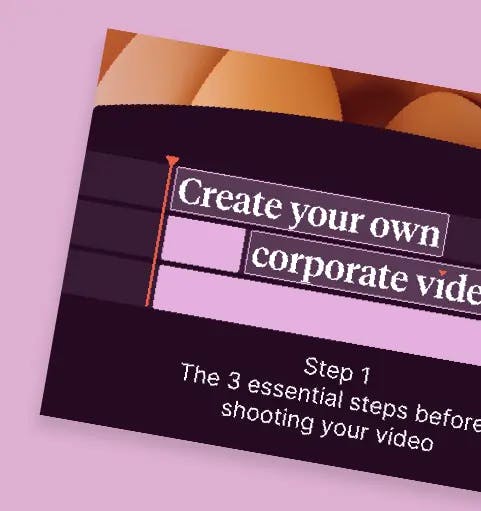
Master the initial phases of a video project!
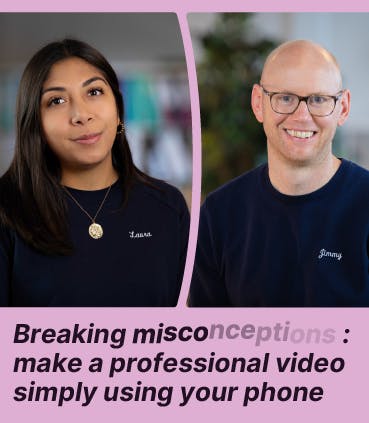
How to make a professional quality interview with a smartphone? Watch the replay now!
